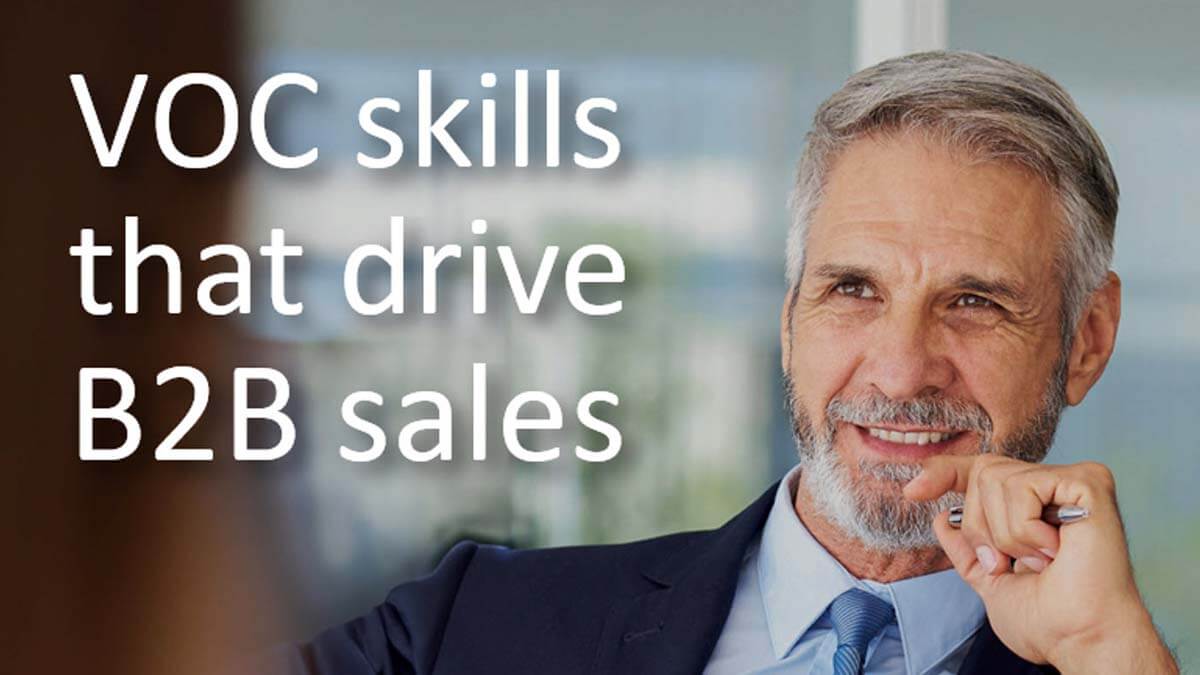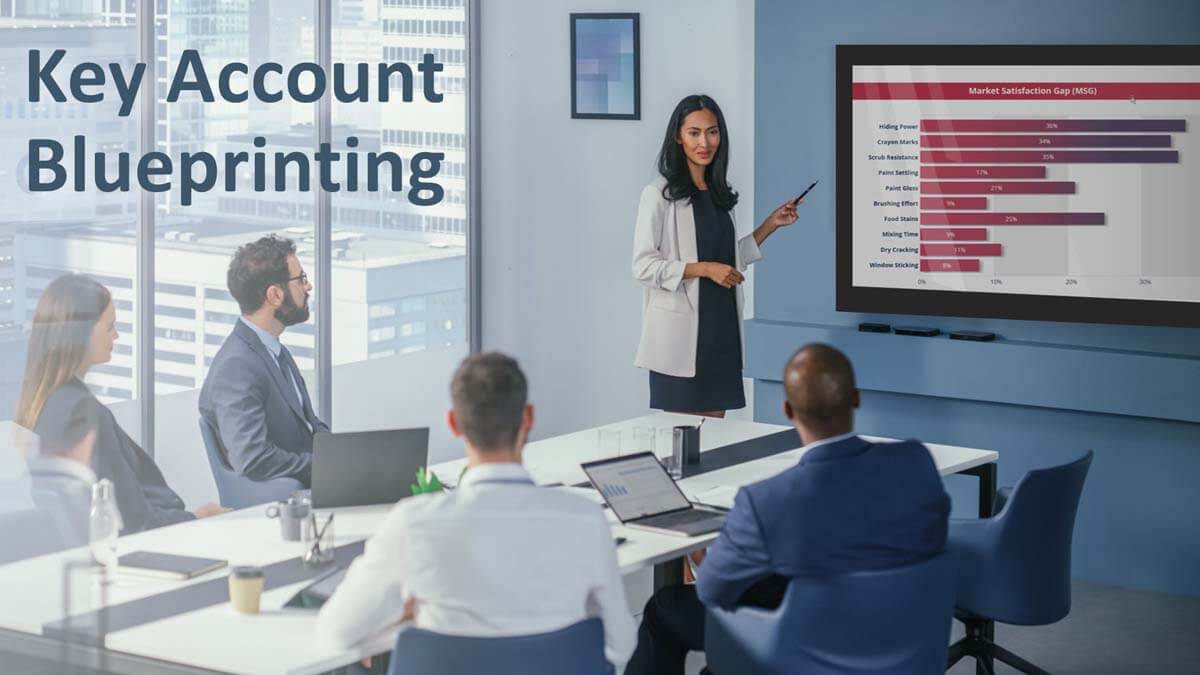Does your operating plan call for profitable growth in 2025? How will you achieve it? You could use your old playbook… or employ AI, arguably the biggest game-changer in decades. Let’s look at four ways to use AI for growth-driving competitive advantage. You can use AI to boost efficiency or effectiveness. Said another way, you ... Read More
Blog Category: Customer Insights (VOC)
Want to sell more? Paradoxically, you need to do less “selling.”
Instead, ask the right questions about your customer’s problems. The consultative selling movement was given a major boost in 1988 with Neil Rackham’s ground-breaking research in SPIN Selling. By observing more than 35,000 sales calls, they established that the most successful salespeople ask great questions. Decades later, we had our own question: Are some questions more likely to drive sales? (The answer is “yes”!) We surveyed 396 B2B sales professionals with over 6,000 years of combined experience concerning 12 voice-of-customer skills.
Download AIM Institute research report, VOC Skills that Drive B2B Sales
Validating hypotheses with customers distorts your entire new product development process.
Confirmation bias is the “tendency for people to favor information that confirms their preconceptions or hypotheses, regardless of whether the information is true.” It’s what happens when you take your lovely new-product hypotheses to customers. This systematically distorts data on customer needs… and that can’t be good for innovation, right?
More in 2-minute video at 35. Insist on data-driven innovation
Focus your innovation on market segments… or “clusters of customers with similar needs.”
Ultimately, everything your business does should be about efficiently delivering value to customers. If you don’t focus on clusters of like-minded customers, their needs will be randomly observed by different people in your company at different times under different conditions. Not an efficient way to develop new products—your lifeblood.
More in 2-minute video at 16. Segment by markets for innovation
What if your customer’s stakeholders don’t agree with each other?
According to the authors of The Challenger Customer, “The limiting factor is rarely the salesperson’s inability to get an individual stakeholder to agree to a solution. More often it’s that the stakeholders inside the company can’t even agree with one another about what the problem is.” To overcome this, try Key Account Blueprinting… New Product Blueprinting applied to one large account at a time. This forces stakeholder agreement.
More in white paper, Key Account Blueprinting
There’s no need to accept much commercial risk… unless you’re a thrill-seeker.
When you finish the front-end of innovation, you may have plenty of technical risk ahead. But you can examine B2B customer outcomes at nine levels, and gain an incredible understanding of the customer’s world. Done well, your commercial risk should be negligible when you enter the development stage.
More in white paper, Timing is Everything (page 6)
Don’t rely on a small staff of voice-of-customer experts to do your company’s interviewing.
Large businesses chalk up thousands of face-to-face customer meetings each year… as sales and technical service reps go about their normal duties. Why not train these people to become VOC experts? They’ve already gained customers’ trust, they know the customer’s language, they’ll get key information first-hand, and there’s no extra travel cost.
More in white paper, Everyday VOC
It is easy to tell if your interview is supplier-led or customer-led.
If you’re dragging in your list of questions and the customer feels they’re doing you a favor… it’s supplier-led. But if you keep the scope broad enough to interest them, let them lead you to what interests them, and help them think deeply through attentive probing… it’s customer-led. It’s also much more effective.
See demo video at Reinventing VOC for B2B
In one study, 76% said their interviews led to unexpected or surprising information.
And that’s the point, isn’t it? If we just try to develop the products our customers ask everyone for, and we haven’t cornered the market on R&D genius, we’ll keep struggling with differentiation. But if we intentionally expose ourselves to unexpected information—that our competitors lack—we’ll create more significant, protectable value.
More in 2-minute video at 25. Let your customers surprise you
The greatest danger in customer interviews is hearing what you want to hear.
Your new product development should start where it ends: with the customer. When you take your “pride and joy” hypothesis to customers and ask their opinion, two bad things can happen: 1) They tell you what they think you want to hear. 2) You hear what you want to hear. Start by uncovering their needs, not testing your pre-conceived notions. And be sure to use quantitative interviews to eliminate confirmation bias.
More in 2-minute video at 35. Insist on data-driven innovation
You say your B2B customers can’t tell you their needs? That would be a first.
It’s much more likely you don’t know how to ask them. B2C customers can seldom describe what will entertain them or boost their self-esteem. But B2B customers are knowledgeable, interested, and objective. They may not know the solutions, but they do know their desired end-results. You’ll learn this when you learn how to ask.
More in e-book, Reinventing VOC for B2B (page 15)
The best way to hear (the customer) is often to see.
One of our best innovations started as an experiment. In 2004 I projected my notes during a customer interview. The customer loved it, the meeting went far longer than expected, and we haven’t looked back since. Sure, customers can correct your notes this way, but our biggest discovery was that customers own what they create and can see. We’ve been calling these “Discovery” interviews ever since.
More in video, Reinventing VOC for B2B
Why take a “leap of faith” when you could take a leap of confidence—more quickly and cheaply?
Lean Startup methodology refers to “Leap of Faith Assumptions,” and recommends testing assumptions with customers at the first opportunity. For B2B, this “first opportunity” to learn comes before a prototype is created… through VOC interviews to mine the foresight of knowledgeable customers. Don’t miss this B2B adjustment to Lean Startup.
More in white paper, Lean Startup for B2B (page 6)
Got cool technology? Great. Just test it silently with customers.
Avoid “technology push.” But should you just leave your technology quivering on the lab bench? Hardly. Conduct customer interviews without mentioning your technology. If customer outcomes match your technology… wonderful! Otherwise, look for different technology (for this market), or look for another market (for this technology).
More in 2-minute video at 21. Give your hypotheses the silent treatment













